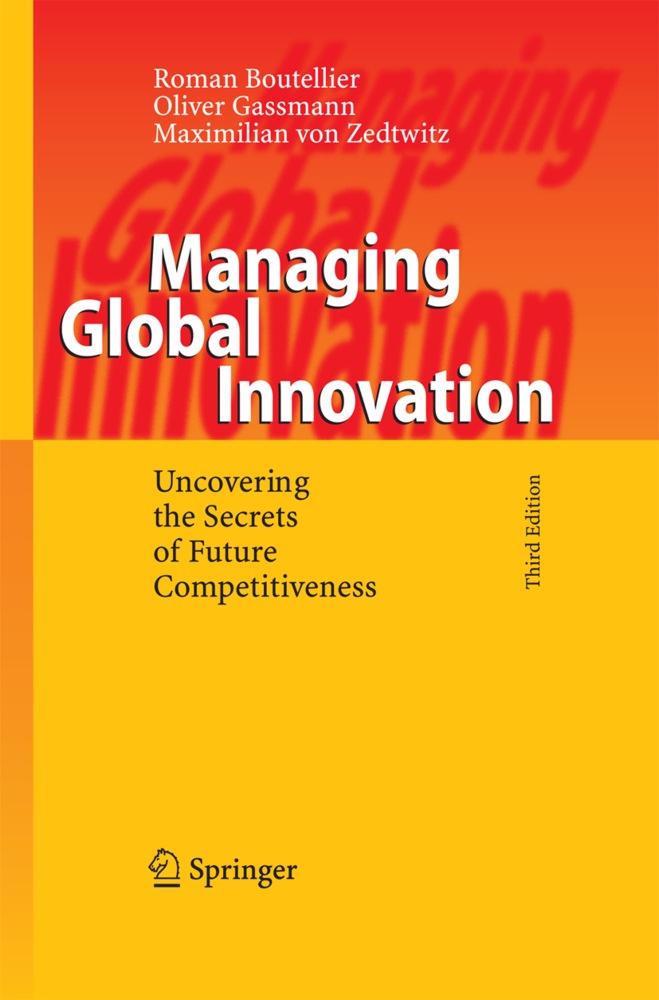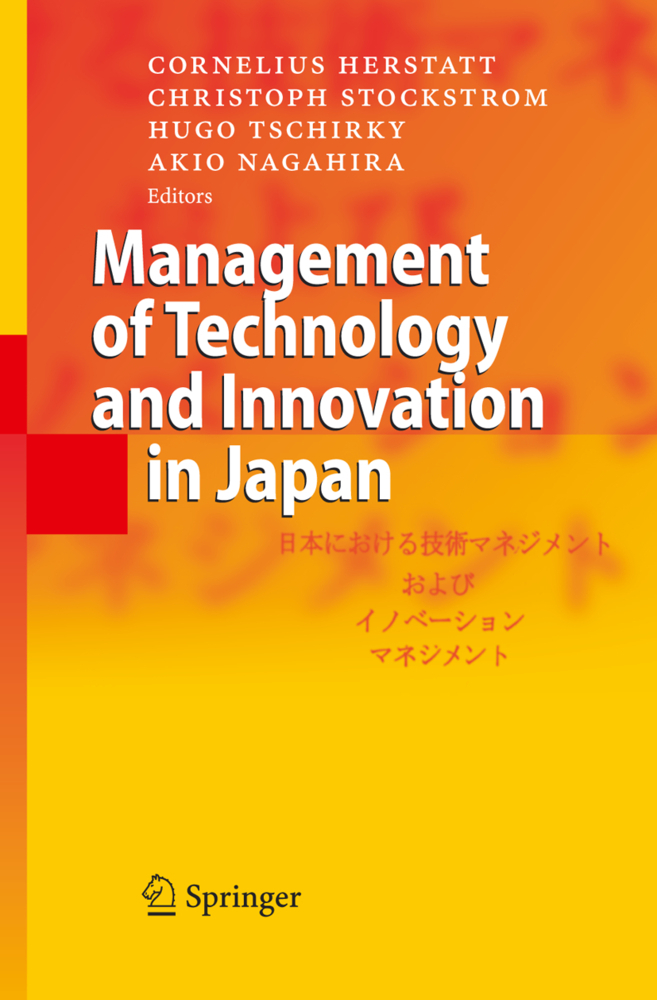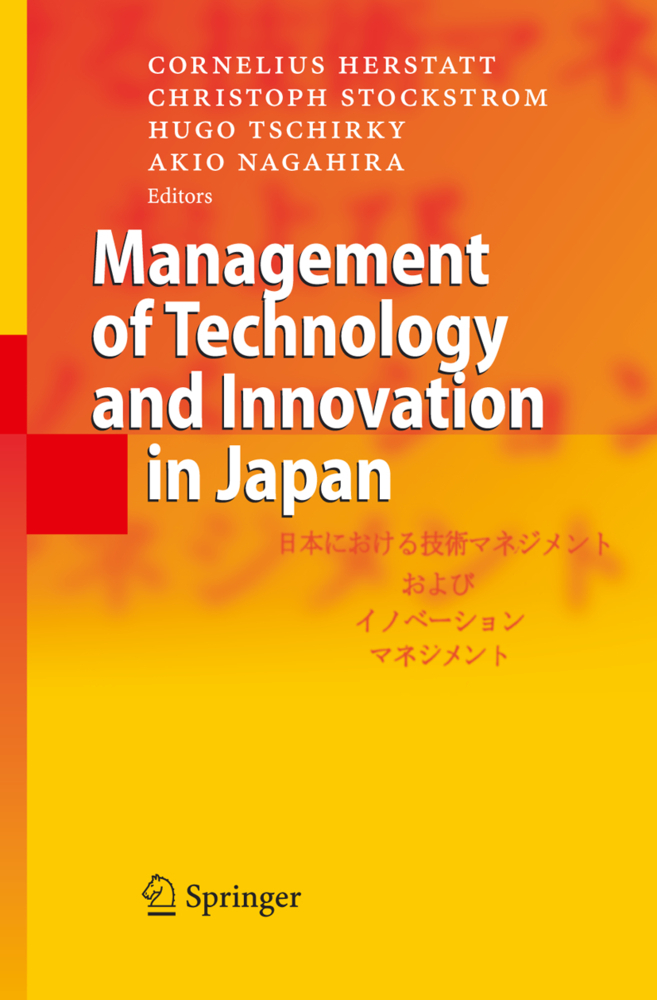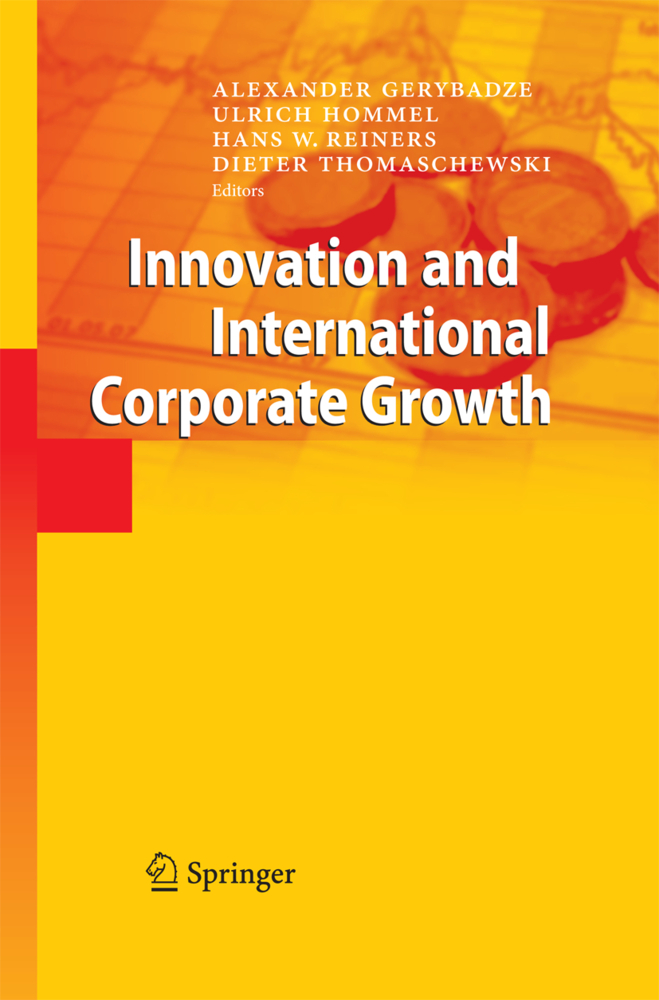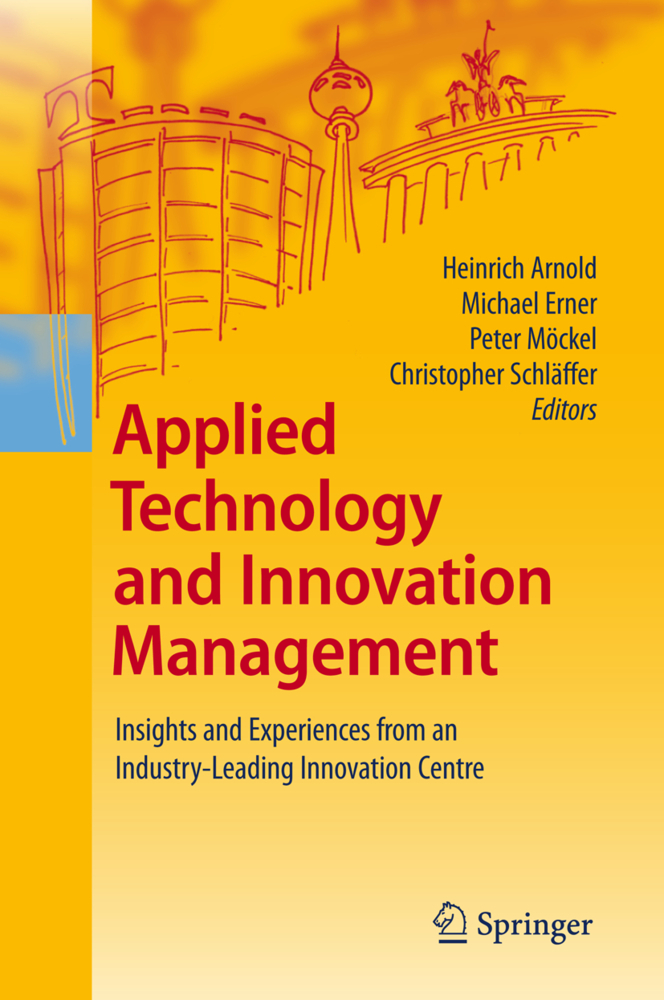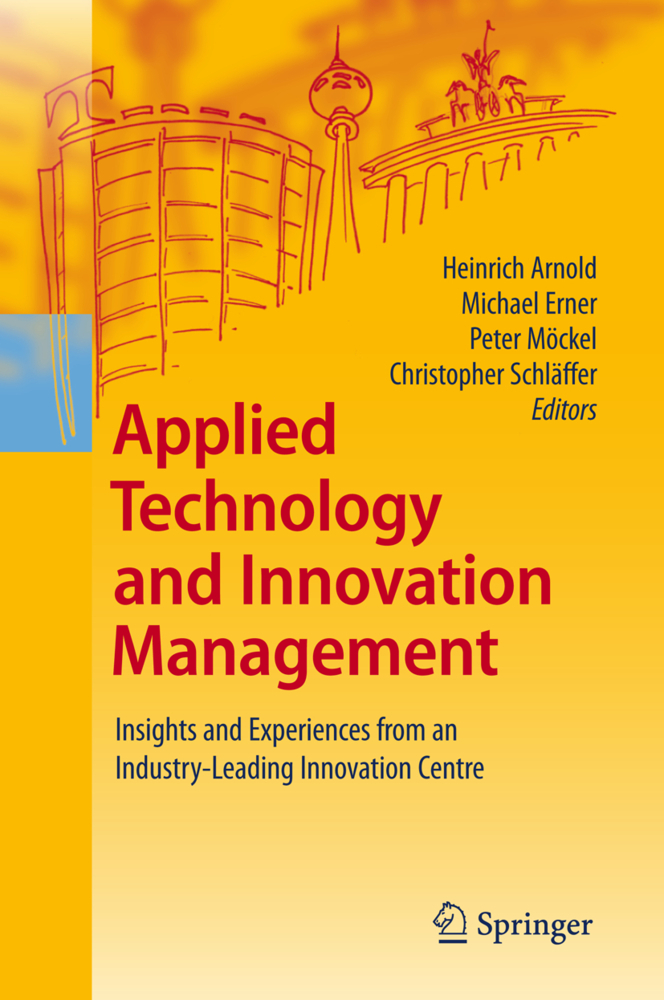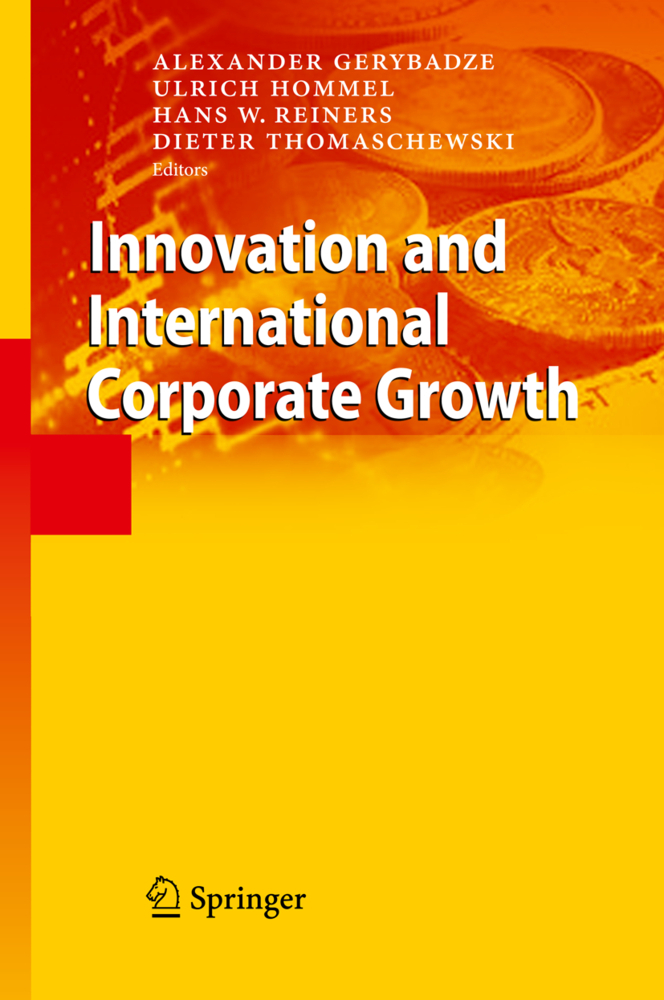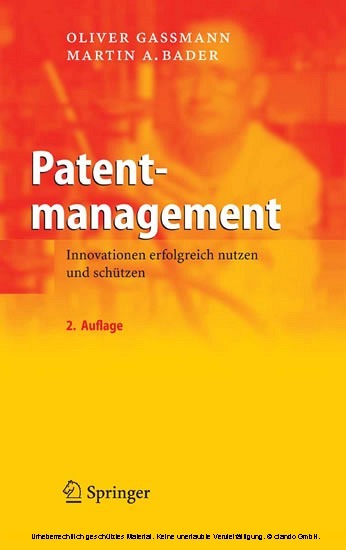Managing Global Innovation
Uncovering the Secrets of Future Competitiveness
If R&D and innovation in the 1990s were about more internationalization, more corporate entrepreneurship, and more information-integration, then the 2000s have been about consolidating and expanding these trends further: more globalization including the technology mavericks of China and India, more open and inbound innovation integrating external technology providers, and more web- and Intern- enabling of innovation processes by involving R&D contributors regardless of their location. The corporate R&D powerhouses of the 1980s are now mostly history. Even where they survived, they had to yield to corporate efficiency efforts and business-wide integration programs. Still, it would be unfair to belittle them in retrospect as they have found new roles in corporate R&D and innovation n- works. In fact, the very successes of centralized R&D organizations of the 1970s and 1980s made possible the revolution of globalized innovation that we have been witnessing since the 1990s. The first two editions of Managing Global Innovation, published in 1999 and 2000, were testimonials of an increasingly internationalizing world of innovation and R&D. In this third edition of Managing Global Innovation, we have retained the basic structure of two conceptual parts (I and II) and three case study parts (III, IV, V). However, we have greatly revised all chapters, including the final "Imp- cations" chapter (part VI), and incorporated new chapters and cases that illuminate and describe the recent trends in the context of the beginnings of global innovation in the 1980s and 1990s.
Extent of R&D Internationalization
Foreign R&D in China
Internal Drivers
External Drivers
Establishing Overlaying Structures
Organizing Virtual R&D Teams
Emerging Patterns
The Market as a Challenge for R&D
Technology Listening Posts
Managing the International R-to-D Interface
Transnational R&D Processes
Information & Communication Technologies
Directors of International R&D Labs
Managing Knowledge and Human Resources
Best-in-Class: The Pharmaceutical and Chemical Industry
DuPont: Gaining the Benefits of Global Networks - from the Science Base to the Market Place
Hoffmann-La Roche: Global Differentiation between Research and Development
Schering: Synchronized Drug Development
Ciba: International Research Laboratories in Japan: Practical Validation of a Strategic Concept
Kao: Localizing R&D Resources
Best-in-Class: The Electronics, Software, and Service Industry
Xerox: The Global Market and Technology Innovator
Canon: R&D-Driver for Continuous Growth and Diversification
Hewlett-Packard: Planet-Wide Patterns in the Company's Technology Tapestry
IBM: Using Global Networks for Virtual Development
SAP: Global Intellectual Property Management in the Software Industry Sector
Unisys: Localization of Software Development
Huawei: Globalizing through Innovation
Fujitsu: Solutions for the Ubiquitous Networking World
Swiss Re: Global Intellectual Property Management in the Financial Services Industry
Best-in-Class: The Electrical and Machinery Industry
ABB: Management of Technology: Think Global, Act Local
Daimler: Global Knowledge Sourcing and Research
Schindler: Institutionalizing Technology Management and R&D CoreCompetencies
Hitachi: Management Practices for Innovation in Global Industrial Research
Leica Microscopy: International Transfer of R&D Activities
MTU: Partner in International High-Tech-Cooperations
BMW Group: Strategic Framework for Global Innovation to Enhance the Efficiency of Global R&D
Siemens: Flying with the Dragon - Innovation in China
Implications
Implications for Organizing Global R&D.
Challenges and Trends
Challenges of Organizing International Research & DevelopmentExtent of R&D Internationalization
Foreign R&D in China
Internal Drivers
External Drivers
Establishing Overlaying Structures
Organizing Virtual R&D Teams
Emerging Patterns
The Market as a Challenge for R&D
Technology Listening Posts
Managing the International R-to-D Interface
Transnational R&D Processes
Information & Communication Technologies
Directors of International R&D Labs
Managing Knowledge and Human Resources
Best-in-Class: The Pharmaceutical and Chemical Industry
DuPont: Gaining the Benefits of Global Networks - from the Science Base to the Market Place
Hoffmann-La Roche: Global Differentiation between Research and Development
Schering: Synchronized Drug Development
Ciba: International Research Laboratories in Japan: Practical Validation of a Strategic Concept
Kao: Localizing R&D Resources
Best-in-Class: The Electronics, Software, and Service Industry
Xerox: The Global Market and Technology Innovator
Canon: R&D-Driver for Continuous Growth and Diversification
Hewlett-Packard: Planet-Wide Patterns in the Company's Technology Tapestry
IBM: Using Global Networks for Virtual Development
SAP: Global Intellectual Property Management in the Software Industry Sector
Unisys: Localization of Software Development
Huawei: Globalizing through Innovation
Fujitsu: Solutions for the Ubiquitous Networking World
Swiss Re: Global Intellectual Property Management in the Financial Services Industry
Best-in-Class: The Electrical and Machinery Industry
ABB: Management of Technology: Think Global, Act Local
Daimler: Global Knowledge Sourcing and Research
Schindler: Institutionalizing Technology Management and R&D CoreCompetencies
Hitachi: Management Practices for Innovation in Global Industrial Research
Leica Microscopy: International Transfer of R&D Activities
MTU: Partner in International High-Tech-Cooperations
BMW Group: Strategic Framework for Global Innovation to Enhance the Efficiency of Global R&D
Siemens: Flying with the Dragon - Innovation in China
Implications
Implications for Organizing Global R&D.
Boutellier, Roman
Gassmann, Oliver
Zedtwitz, Max von
| ISBN | 978-3-540-25441-6 |
|---|---|
| Artikelnummer | 9783540254416 |
| Medientyp | Buch |
| Auflage | 3rd ed. |
| Copyrightjahr | 2008 |
| Verlag | Springer, Berlin |
| Umfang | X, 807 Seiten |
| Abbildungen | X, 807 p. |
| Sprache | Englisch |


